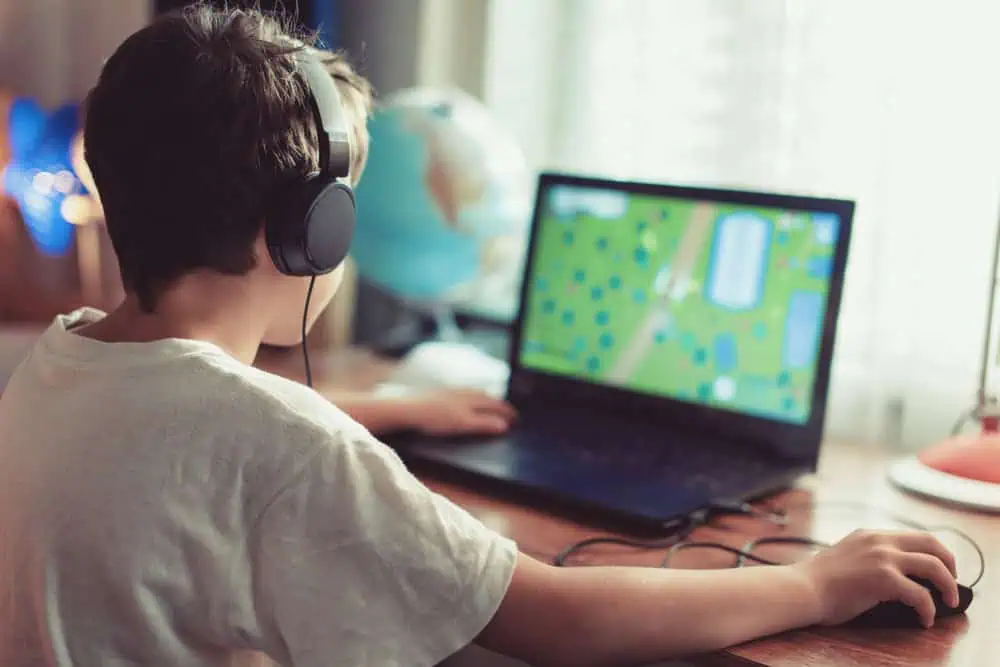Has your Face ID stopped working, leaving you curious why? This article discusses the factors behind this problem.
Reasons Your iPhone’s Face ID May Malfunction
The iPhone’s Face ID is one of the marvels of technology. However, it can quickly turn into a source of frustration when it refuses to function properly.
While there can be several causes of this problem, this section explains five of the major causes.
1. Hardware Malfunction
The TrueDepth camera system is a critical component for Face ID on iPhones. It consists of multiple sensors, including an infrared camera, flood illuminator, and dot projector.
These work in tandem to create a detailed 3D map of your face. Therefore, if any of these components is faulty, the reliability of Face ID can be compromised.
For example, if the infrared camera is not functioning properly, the system might struggle to capture the necessary depth information. This can make it unable to get an accurate facial recognition.
2. Environmental Factors
iPhone’s Face ID relies on infrared sensors to work in various lighting conditions. However, extreme lighting situations can pose challenges.
In very bright conditions, the flood illuminator may struggle to project infrared light. Also, in low-light environments, the sensors may find it difficult to accurately map the facial features.
While the system can adapt to a wide range of lighting, extreme conditions might affect its performance. Besides, Face ID may fail if there are obstructions between your face and the TrueDepth camera.
Specifically, accessories like sunglasses or hats can interfere with the infrared sensors, preventing them from getting a clear image of your face. Additionally, dirt, smudges, or scratches on the front camera or TrueDepth camera components can disrupt the facial mapping process.
3. Outdate iOS
When Apple releases updates for iOS, they often include optimizations and improvements for the overall performance of the device. This includes the functioning of features like Face ID.
Moreover, newer iOS versions are designed to be compatible with the latest hardware and may include specific enhancements for the TrueDepth camera system. Hence, if your iPhone is running an outdated iOS version, it might not be fully optimized to support the latest Face ID functionalities.
Moreover, updates to iOS often come with bug fixes that address issues discovered in previous versions. If Face ID problems are related to software bugs, these issues may have been resolved in newer iOS releases.
Thus, running an outdated iOS could mean that your device is still affected by known bugs that impact the proper functioning of Face ID.
4. Improper Settings
Face ID feature relies on accurate and appropriately configured settings to function optimally. Basic settings related to Face ID, such as enabling or disabling the feature for specific functions, can influence its performance.
If these settings are not configured in line with the user’s preferences or if there are accidental changes, Face ID may not behave as expected.
5. Security Concerns
Security measures on iPhones are designed to protect your device from unauthorized access. For instance, if there are multiple failed Face ID attempts, the system may temporarily disable Face ID.
Due to this, it will require a passcode for authentication. This is a security feature to prevent unauthorized users from attempting to bypass Face ID repeatedly.
Similarly, if you haven’t unlocked your device in more than two days, the Face ID system may be disabled temporarily. Another case where the Face ID might be disabled is when the Emergency SOS feature is active.
While all these are protective measures, it can lead to frustration for the legitimate user if Face ID is disabled frequently.
Options to Fix Face ID that Doesn’t Function Properly
If you’re experiencing issues with Face ID on your iPhone, here are some general troubleshooting steps you can try to resolve the problem.
1. Restart Your iPhone
A simple restart can resolve temporary glitches or issues in the iPhone’s software. Restarting the device clears the system’s temporary files and processes.
This can potentially resolve minor software-related problems that may be affecting Face ID. It’s a quick and straightforward step that is often effective in addressing temporary issues.
2. Clean the TrueDepth Camera and Your Face
The TrueDepth camera system on the front of your iPhone includes several components for accurate face mapping. Thus, any obstruction or dirt on these components can hinder Face ID’s ability to accurately recognize your face.
Cleaning the TrueDepth camera helps maintain clear visibility for the facial recognition process. Also, ensure your face is free from any obstructions, such as accessories or smudges.
Besides, the TrueDepth camera requires an unobstructed view of your face for accurate recognition. So, any accessories, cases, or objects covering the TrueDepth camera can interfere with its operation.
Ensuring that there are no physical obstructions is essential for optimal Face ID performance.
3. Check for iOS Updates
Keeping your iPhone’s operating system up-to-date is crucial for the optimal functioning of Face ID. iOS updates often include bug fixes and security patches.
Additionally, it comes with improvements that can address issues affecting various features, including Face ID. So, by regularly installing the latest updates, you ensure that your device gets the most recent enhancements and fixes provided by Apple.
4. Check Face ID Settings or Reset Face ID
Verifying the Face ID settings ensures that the feature is enabled for the functions where you intend to use it. This includes unlocking your iPhone, making App Store purchases, and authenticating within third-party apps.
Go to “Settings” > “Face ID & Passcode” and ensure that the relevant options are turned on. Checking and adjusting these settings can help tailor the Face ID experience to your preferences and needs.
Aside from that, resetting Face ID can be a troubleshooting step to address potential issues with the stored facial data. By doing this, you clear the existing Face ID information and start the enrollment process afresh.
This can be particularly helpful if there have been changes to your facial features.
5. Contact Apple Support
If the problem persists after trying the above steps, reach out to Apple Support. Visiting an Apple Authorized Service Provider is also advisable.
These professionals have the expertise and tools to perform in-depth diagnostics and address potential hardware issues. If there’s an underlying problem with the TrueDepth camera or other components, professional assistance may be necessary for a thorough resolution.
Frequently Asked Questions
Yes, glasses, hats, or accessories that obstruct the view of your face can impact Face ID. Therefore, it is important to ensure that the TrueDepth camera has a clear line of sight to your face.
Also, if necessary, set up an alternate appearance with accessories.
From the iPhone X to the latest model uses Face ID.
Face ID may stop working due to hardware issues like damage to the TrueDepth camera. Also, environmental factors like poor lighting can allow the iPhone’s Face ID to malfunction.
That’s not all; outdated iOS and improper settings are also major causes of this problem.
Face ID does not immediately stop working after five failed attempts. Instead, it temporarily disables itself, requiring a passcode for authentication.
After entering the correct passcode, Face ID becomes active again.
Yes, you can make purchases using Face ID. Face ID provides a secure and convenient way to authorize transactions on your iPhone.
These include purchases in the App Store, iTunes, or within supported apps, by using facial recognition for authentication.
Conclusion
Face ID issues can stem from a series of factors – ranging from hardware malfunctions to environmental conditions. Face ID’s reliance on a precise blend of hardware, software, and user alignment underscores the need for careful troubleshooting.
Gladly, this article discussed helpful troubleshooting steps to fix your iPhone’s Face ID that refuses to function properly. These include ensuring the cleanliness of the TrueDepth camera and updating iOS.
However, persistent issues may necessitate professional assistance. Fortunately, Apple Support or authorized service providers can diagnose underlying hardware concerns.
We trust this article has been both informative and enjoyable. If you found it valuable and want to share your thoughts, head over to the “Leave a Reply” comments form at the bottom of this page.
Alternatively, you can respond to the “Was this page helpful?” question below.
To discover more articles like this, explore our Technology Explained section.




Resetting Face ID and restarting iPhone can help us solve this problem. If iOS 17 Face ID not working is caused by unknown system issues, it is recommended to use a system repair tool to fix them, such as TunesKit iOS System Recovery. If the problem is caused by incorrect settings on your iPhone, resetting all settings can get Face ID back to normal.